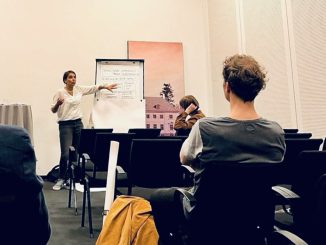
In the last blog we looked at some of the basic building blocks for creating a level of fun while being stuck in a lockdown – essentially gamification with a purpose (learning, health, fitness, saneness, living with others). Please review the article prior to proceeding and also reflect on the game your’ve created.
First, congratulations on constructing a game! If you followed the advice given, you have taken some very essential key steps. For starters, you considered the type of player you constructed the game for – the differences between a game for one player, for your parents, for your children, or for roommates. The game was also constructed with a key objective that is vital in gamification, learning. There is also a purpose to your game, either physical health, mental health, promoting positivity, being connected to your community or just learning something new. Maybe your game also built links between an extrinsic motivator and daily/weekly tasks. You have also set the basics of a field of play, and maybe even established a start and finish to your game, provided the lockdown ends and you don’t want to keep playing. Excellent!
Now that the basics have been established, let’s look at the topic a little more deeply. As many games fail due to the design, we are going to look at three factors that will support your game further: developing a better understanding of the types of players, basic game elements, and adding levels.
Developing a Better Understanding of Player Types
Bartle developed the original classification of player types, and for our purposes it is still relevant. The four types of broadly defined player are: Socializers, Explorers, Achievers, and Killers. A fun test to help determine one’s classification may be found here. On this site there is another test for discovering the type of player that is built upon slightly different classifications (in German).
Socializers look for connections, which in a game means they spend time chatting and engaging with other players. They enjoy working with others to accomplish a task. This is also the largest category. Explorers enjoy discovering new aspects and sharing what they have learned. Achievers are out to win, whether it is being first on the leaderboard or having accumulated the greatest wealth. They are rather easy to incentivise. Killers want to dominate in the game and will look for loopholes to gain an advantage. They thrive on change and chaos, but fortunately only comprise one percent of the population.
Now that you are armed with an idea of how to classify your players, how can you make the game more appealing and rewarded to each player based upon their needs?
Basic Game Elements
Now that there is a clearer understanding of the players in the at home due to COVID 19 game, it is possible to begin to apply different game elements based upon player needs. Game elements are tools for the game designer, they are the items that keep the players engaged in the game. While there are multiple game elements, here are a few that should be fairly easy to adapt.
Story:
Use a story to tell about an event, either true or fictional, in such a way that your players experience or learn something just by the fact that he heard the story. This helps to set the trigger for your players to want to get started and find out how to solve the conflict, that every good story indicates. Who doesn’t love a mystery?
Resources:
Resources can be both a tool to progress and some kind of reward by earning/unlocking it. What kind of resources you chose will also help you to design the experience itself. Are these surprising resources? New ones that you first have to learn how to handle them? Are they telling you something about the possible path to solve the challenge or do you only know about what resource to use if you have already figured out how to solve it? Is there only one resource to use or can you decide between different ones or do you even have to earn the possibility to use a more advanced resource?
Collaboration:
As we are mostly stuck indoors, and working towards remaining fit, building required collaboration into the game will help with our mental well-being. Are there ways to determine the success of more than one player based upon the group outcome of a task? Is there a way to separate the tools each has so that the task may only be completed by working together? As collaborative learning provides greater outcomes than going it alone, how can you build communication requirements into the game?
Levelling Up
Think back to classic video games, there were very clear levels, which upon completion ended with a fight against the “boss”. This required the usage of multiple skills in order to succeed, and afterwards there would be some sort of “pot of gold”. The level of difficulty always increased and was built to match the advancement of the player.
For our at home game, is it possible to build the rewards given for weekly levels as new resources for next week’s tasks? It is very important to remember that the difficulty is very subjective as it is based upon the felt progress of the participants. A level system should reflect that the player could not have mastered the current level/challenge if they had not mastered the previous level.
Ending Notes
Remember to start simple. One doesn’t learn to run a marathon by looking at the full distance and attempt to run the full distance on the first day of training, instead it is best to focus on just running to the next ten meters. Break your game into chunks and start with small steps.





